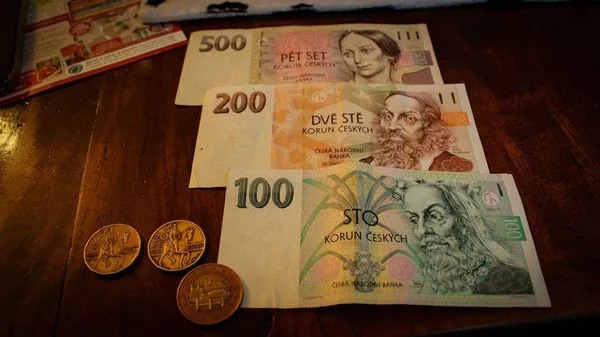In today’s globalized financial markets, understanding currency exchange rates is crucial for investors, businesses, and individuals engaged in international transactions. Currency conversion, especially between major currencies such as the Euro (EUR) and the British Pound (GBP), impacts a wide range of financial activities including investments, trade, and travel. This article delves into the current exchange rate between the Euro and the Pound, explores historical trends, and provides insights into how fluctuations can affect financial decisions.
Understanding Currency Exchange Rates
The Basics of Currency Conversion
Currency exchange rates represent the value of one currency in terms of another. For instance, the exchange rate between the Euro and the British Pound indicates how many Pounds one Euro can be exchanged for. This rate is determined by various factors including economic conditions, market demand, interest rates, and geopolitical events.
To convert 46 Euros into Pounds, you need to know the current EUR/GBP exchange rate. For example, if the exchange rate is 1 EUR = 0.85 GBP, then 46 Euros would be converted to Pounds using the following formula:
Amount in GBP=Amount in EUR×Exchange Rate
So, 46 EUR×0.85 GBP/EUR=39.10 GBP
Sources of Exchange Rate Data
Exchange rates fluctuate constantly due to market dynamics. To obtain the most accurate and up-to-date exchange rate, investors and businesses typically rely on financial news platforms, currency converter tools, and central banks. Notable sources include:
Financial News Websites: Platforms like Bloomberg, Reuters, and CNBC provide real-time exchange rate data and financial analysis.
Currency Converter Tools: Websites and apps such as OANDA and Google Finance offer instant currency conversion.
Central Banks: The European Central Bank (ECB) and the Bank of England publish official exchange rates and financial reports.
Historical Exchange Rate Trends
Long-Term Trends
Understanding historical exchange rate trends between the Euro and the British Pound helps investors and businesses make informed decisions. Over the years, the EUR/GBP exchange rate has experienced significant fluctuations due to economic and political events.
For example, during the Eurozone crisis of the early 2010s, the Euro weakened against the Pound as investors sought safer assets. Conversely, in the wake of Brexit, the Pound experienced volatility, impacting its value relative to the Euro.
Recent Developments
In recent years, the EUR/GBP exchange rate has been influenced by factors such as Brexit negotiations, the economic impact of the COVID-19 pandemic, and shifts in monetary policy by the ECB and the Bank of England. Analyzing these trends provides context for current exchange rates and helps anticipate future movements.
Impact of Exchange Rate Fluctuations
For Investors
For investors holding assets in both currencies, fluctuations in the EUR/GBP exchange rate can affect portfolio value and returns. For instance, an investor with Euro-denominated assets will see the value of those assets increase or decrease depending on the strength of the Pound relative to the Euro.
Currency risk management strategies, such as hedging, can help mitigate the impact of exchange rate volatility. Investors might use financial instruments like currency forwards, options, and futures to protect against adverse movements in exchange rates.
For Businesses
Businesses engaged in cross-border trade or operations face currency risk when dealing with multiple currencies. A company based in the Eurozone that exports goods to the UK will be affected by changes in the EUR/GBP exchange rate. A stronger Pound means higher revenues in Euro terms, while a weaker Pound reduces revenue.
To manage currency risk, businesses often employ strategies such as:
Currency Hedging: Using financial contracts to lock in exchange rates and reduce uncertainty.
Pricing Strategies: Adjusting prices to reflect currency fluctuations and maintain profit margins.
Diversification: Spreading operations and revenues across different currencies to minimize exposure.
For Individuals
For individuals, especially those traveling or making international purchases, exchange rate fluctuations can impact spending power. A favorable exchange rate means better value when converting money, while an unfavorable rate can lead to higher costs.
See Also: Current EUR Exchange Rate: 700 Euros in Pounds
Travelers and expatriates often monitor exchange rates to find the best time to convert currencies or to make purchases. Online tools and currency converter apps can assist in making real-time decisions.
Current EUR/GBP Exchange Rate
Recent Exchange Rate Data
As of the most recent data, the EUR/GBP exchange rate stands at approximately 0.85 GBP per Euro. This rate is subject to change due to ongoing market conditions and economic developments. For precise conversion, always refer to real-time exchange rate sources.
Using the current exchange rate:
46 EUR×0.85 GBP/EUR=39.10 GBP
Thus, 46 Euros is equivalent to approximately 39.10 Pounds.
Factors Influencing Exchange Rates
Economic Indicators
Several economic indicators influence the EUR/GBP exchange rate:
Interest Rates: Central bank interest rates impact currency values. Higher interest rates tend to strengthen a currency as they attract investment.
Inflation Rates: Lower inflation rates generally lead to a stronger currency, while higher inflation can weaken it.
Economic Growth: Strong economic performance can boost investor confidence and strengthen the currency.
Political Events
Political stability and policy decisions play a significant role in currency valuation:
Brexit: The UK’s decision to leave the European Union has led to significant fluctuations in the GBP, affecting its exchange rate with the Euro.
Government Policies: Changes in fiscal and monetary policies can influence investor sentiment and impact exchange rates.
Market Sentiment
Market perception and investor behavior also contribute to currency fluctuations. Speculative trading, geopolitical tensions, and global economic trends can drive short-term exchange rate movements.
Conclusion
Understanding the exchange rate between the Euro and the British Pound is crucial for making informed financial decisions. Whether you are an investor, business owner, or individual, being aware of the current rate, historical trends, and influencing factors can help you navigate the complexities of currency conversion.
At present, 46 Euros is equivalent to approximately 39.10 Pounds, based on the current exchange rate of 0.85 GBP per Euro. By staying informed about exchange rate movements and employing effective currency management strategies, you can optimize financial outcomes and mitigate risks associated with currency fluctuations.
Related Topics:



























